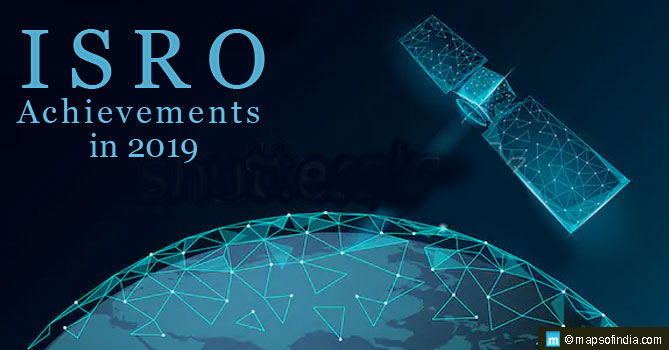
India’s entry into space science research began with the establishment of the Indian National Committee for Space Research (INCOSPAR) in 1962 under the leadership of Dr Vikram Sarabhai.
Following this development, INCOSPAR evolved into the Indian Space Research Organization (ISRO) in 1969 to further India’s research, development, and exploration of Space and related technologies.
The Organisation has its main rocket launch port at the Satish Dhawan Space Centre (SDSC) SHAR, Sriharikota. With increasing missions, ISRO is in the process of acquiring 2,300 acres of land in Tuticorin, Tamil Nadu, for establishing a second rocket launch port. Once completed, the port will give a boost to ISRO’s launch capabilities.
ISRO’S achievements till date covers:
- 101 Spacecraft missions including 3 Nano Satellites and 1 Micro Satellites
- 72 Launch Missions
- 9 Student Satellites
- 2 Re-entry Missions
- 269 Foreign Satellites from 32 countries
ISRO launch time-line for 2019
- 04 January 2019: PSLV C44 Mission
- 06 February 2019: GSAT 31 Satellite launch
- 01 April 2019 saw PSLV-C45 / EMISAT launch
- 22 July 2019: Chandrayaan-2 Mission
- 22 May 2019: PSLV-C46 Mission
- 27 November 2019: PSLV-C47
In 2019, the five biggest achievements of ISRO are:
1. Chandrayaan-2 Mission
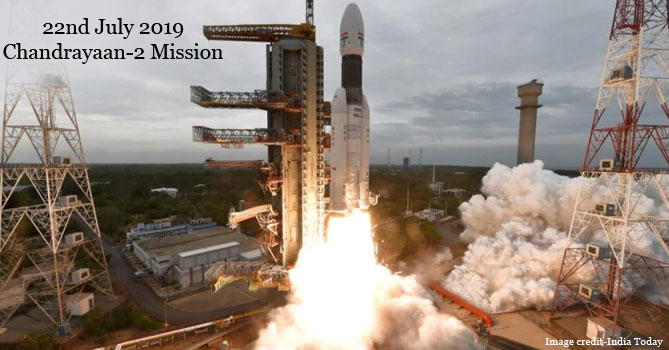
On July 22, 2019, ISRO launched its most ambitious space program – Chandrayaan 2, a spacecraft landing mission on the lunar surface.
The Chandrayaan-2 mission was a complex one and the highlight of ISRO’s long list of achievements to date. The mission was a major technological leap for ISRO involving complex integration of four critical technologies:
- The Launcher – GSLV MK-III
- The Orbiter
- Vikram Lander
- Pragyan Rover
Chandrayaan-2 aimed to explore and study the unexplored region of the Moon – the South Pole. The objective was to land the Pragyan Rover on the surface of the moon to conduct seismography, topography, thermo-physical characteristics, and chemical composition of the surface soil, mineral identification, and concentration.
The GSLV MK-III is India’s most powerful launcher developed with the capacity to launch a 4-ton class of satellites into Geosynchronous Transfer Orbit. Giving GSLV MK-III its capability is S200 solid rocket boosters, L110 liquid (core) stage, and C25 upper stage components.
The mission was to inject the Chandrayaan-2 into space and progressively raise its orbit. Following Trans Lunar Insertion (TLI), the craft exited the earth’s orbit and entered the moon’s. With the Orbiter entering the Moon’s lunar polar orbit at 100 km, the Vikram Lander separated from the Orbiter and began circling the Moon in 100 kms x 35 km orbit.
Vikram Lander successfully followed a pre-determined descent towards the moon’s surface and functioned normally till it descended to 2.1 km from the moon’s surface. At this stage, all communications broke down with the Orbiter, and the subsequent events have not being tracked.
The Chandrayaan-2 mission’s objective was to land the Vikram Lander on the surface of the moon while Pragyan Rover was to conduct the survey and analysis of samples collected.
The mission was a complete success to the point before the final landing (2.1 km from the Moon’s surface). Even so, ISRO is determined to learn from its mistakes and will continue its pursuit of lunar discovery in the coming times.
Read More: Chandrayaan 2: ISRO Launches Country’s Most Powerful Spacecraft
2. GSAT-31
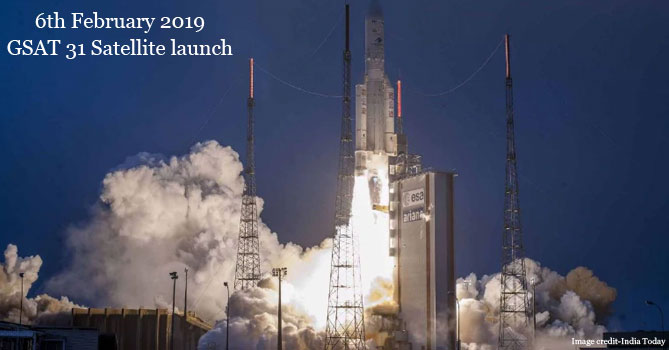
On February 6, 2019, the Arianne-5 launcher took off from French Guyana carrying ISRO’s GSAT-31, a 2,535 kg communications satellite. It was the 40th successful satellite launched by ISRO. The satellite GSAT-31, with its Ku-band transponders, is designed to offer communication services to the Indian mainland and islands for 15 years.
It will support DTH-television services, Digital Satellite News Gathering, VSAT networks, television uplinks, and cellular backhaul connectivity, among several other features.
3. PSLV C44 Mission
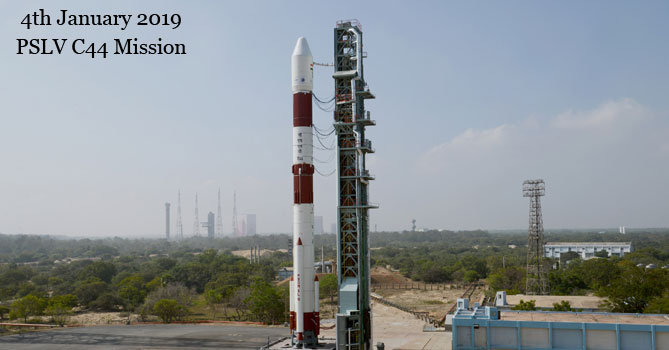
On Jan 4, 2019, PSLV-C44 launched successfully from the Satish Dhawan Space Centre (SDSC) SHAR in Sriharikota.
Over 13 minutes and 26 seconds from take-off, PSLV-C46 injected Microsat-R, an imaging satellite, at an orbit of 274 km.
In the next manoeuvre, after two restarts, PSLV-C44 injected Kalamsat-V2, a 1.26 kg student satellite, into orbit at 453 km.
4. PSLV-C45 / EMISAT Mission
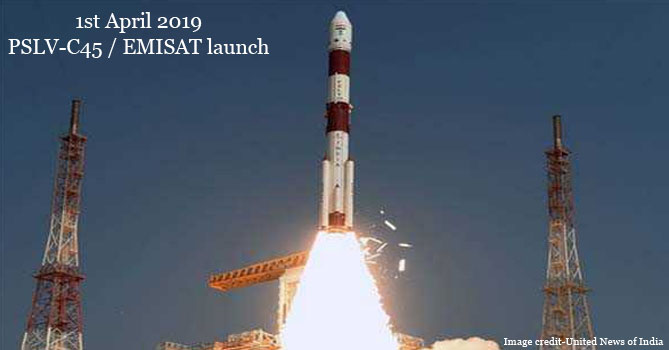
The day, April 1, 2019, saw PSLV-C45, powered by 4 strap-on motors, take off from SDSC carrying the EMISAT satellite along with 28 international commercial satellites of other countries.
At seventeen minutes and twelve seconds, PSLV-C46 successfully injected the 436 kg EMISAT at a polar-synchronous orbit at 748 km from the earth. The PSLV then proceeded to inject the 28 foreign satellites into the respective orbits. Also, EMISAT facilitates electromagnetic spectrum measurement.
Read More: What is EMISAT and How would It Secure India?
5. PSLV-C46 Mission
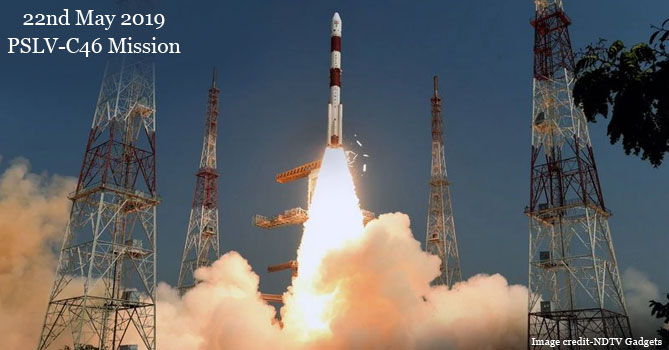
On May 22, 2019, ISRO successfully launched PSLV-C46 carrying the RISAT-2B satellite. Fifteen minutes and thirty seconds from launch, PSLV-C46 injected RISAT-2B into orbit at 555 km and an inclination of 37 degrees to earth’s equator. It was the 72nd launch mission of the SDSC in Sriharikota.
The 615 kg RISAT-2B satellite facilitates services for agriculture, forestry, and disaster management.
6. PSLV-C47 Launches Cartosat-III Mission
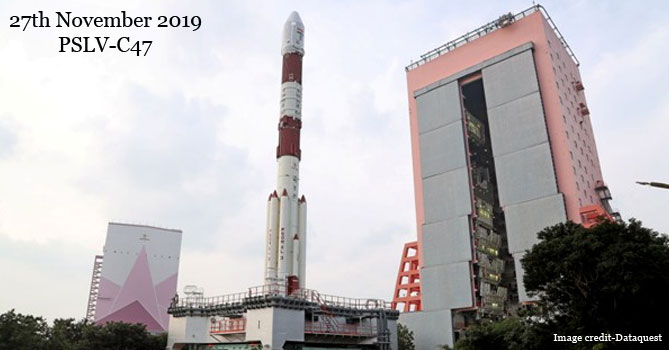
On Nov 27 2019, ISRO launched the PSLV-C47 rocket carrying the Cartosat-3 satellite with 3rd generation advanced high-resolution imaging capability.
The PSLV-C47 in ‘XL’ configuration, boosted by 6-solid strap-on motors, successfully launched Cartosat-3 into orbit at 509 km and 97.5 degrees inclination to the equator. It then proceeded to launch 13 commercial Nanosatellites from the United States.
It was the 21st flight of the PSLV series and the 74th launch of the SDSC, Sriharikota.





